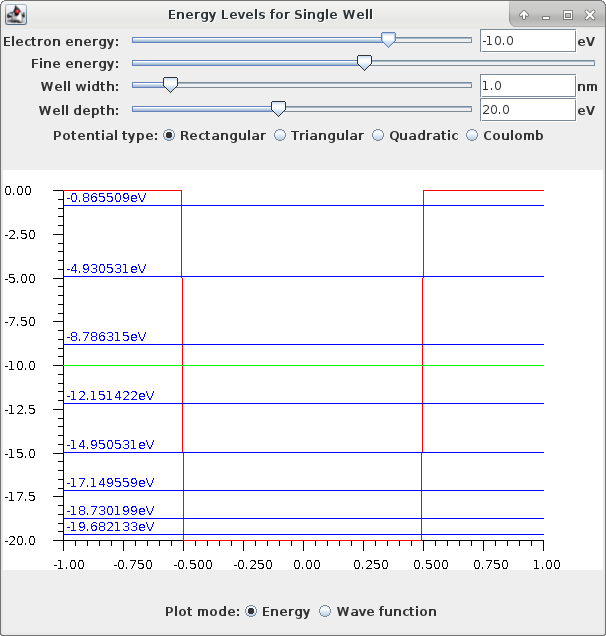

determine the wave function of an electron bound in a potential well. The potential function V(x) is assumed to exhibit a central well region where the electron energy, E, is higher than the floor of the well, but also climbs to a field potential that is higher then the electron energy, so that the electron is bound inside the well. It is a consequence of the wave solutions that there are only certain energy levels that allow the wave solutions to resonate within the structure of the potential well. In order for it to correspond to a real physical particle, the wave function solution must remain bounded at the extremes of the x coordinate so that the wave is normalizable over all x.
There are two plot modes available, one showing the energy levels, and the other plotting the wave function.
In the wave function mode, the numerical solution of the Schrödinger equation starts at the left hand edge and progresses to the right, as the x value increases. By adjusting the electron energy you can observe that there are only a few values of E that initiate a solution that will end up giving a normalizable wave function at the right hand edge. These energy levels of course correspond with the values with the allowed levels shown in the energy level plot mode. Those allowed levels in blue are solved numerically by the application directly from the Schrödinger equation with a search algorithm that converges automatically on the E values that end up satisfying a condition that indicates the solved wave function is normalizable.
Run from a shell or command terminal in the download directory with:
java -jar EnergyLevelsSingle.jar
This application lets you find allowed energy levels for an electron in a potential well. Various profiles of the well potential can be chosen: Rectangular, Triangular, Coulomb and Quadratic. The quadratic profile corresponds to the quantum harmonic oscillator.

Back to Computational Physics Playground page
Back to John Fattaruso's home page